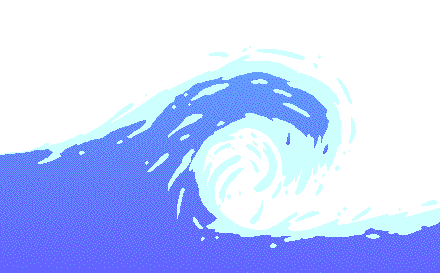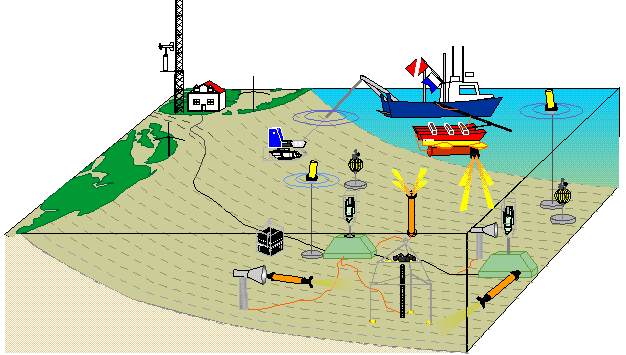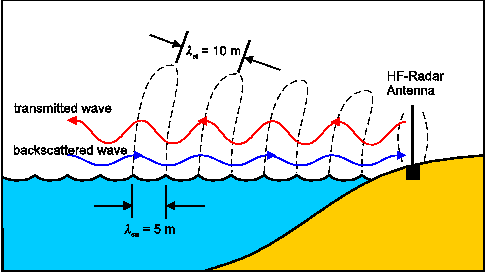The Use of CODAR High Frequency
Radar to Attain Wave Height Measurements

Introduction
The Use of CODAR High Frequency
Radar to Attain Wave Height Measurements

Introduction
 |
Rutgers Longterm Ecosystem Observatory (LEO-15) off the southern New Jersey Coast is a central component of research at the Institute of Marine and Coastal Sciences. The observation network in place includes a wide variety of instruments which gather real time oceanographic data. However, measurement of the wave spectra at LEO-15 have been limited to a single fixed node. Shore based remote sensing observations of currents are being collected over a large area of ocean, including LEO-15, using a CODAR Ocean Sensors Limited SeaSonde high frequency radar system. We recently acquired the ability to measure ocean wave spectra using CODAR. |
What is HF radar?
The high frequency (HF) band of the electromagnetic spectrum, with frequencies of 3 to 30 MHz corresponding to wavelengths of 100 to 10 m, is within the radio bands. Crombie (1955) found that some HF signals recorded near the ocean had a Doppler shift of less than a hertz above and below the transmitted signal and concluded the shift was due to "Bragg scattering" of the signal by ocean waves. Bragg scattering occurs when the transmitted energy (HF radar waves in our case) is reflected by ocean waves that are traveling radially towards or away from the radar and whose wavelength is half aslong as the transmitted signal.

These reflections result in strong
peaks in the backscatter spectrum (Figure below). HF radar use the
scattering of the first order Bragg peaks to estimate ocean currents by
comparing the scattering to the expected Doppler shift due to the Bragg
waves (additional shift is then attributed to currents)